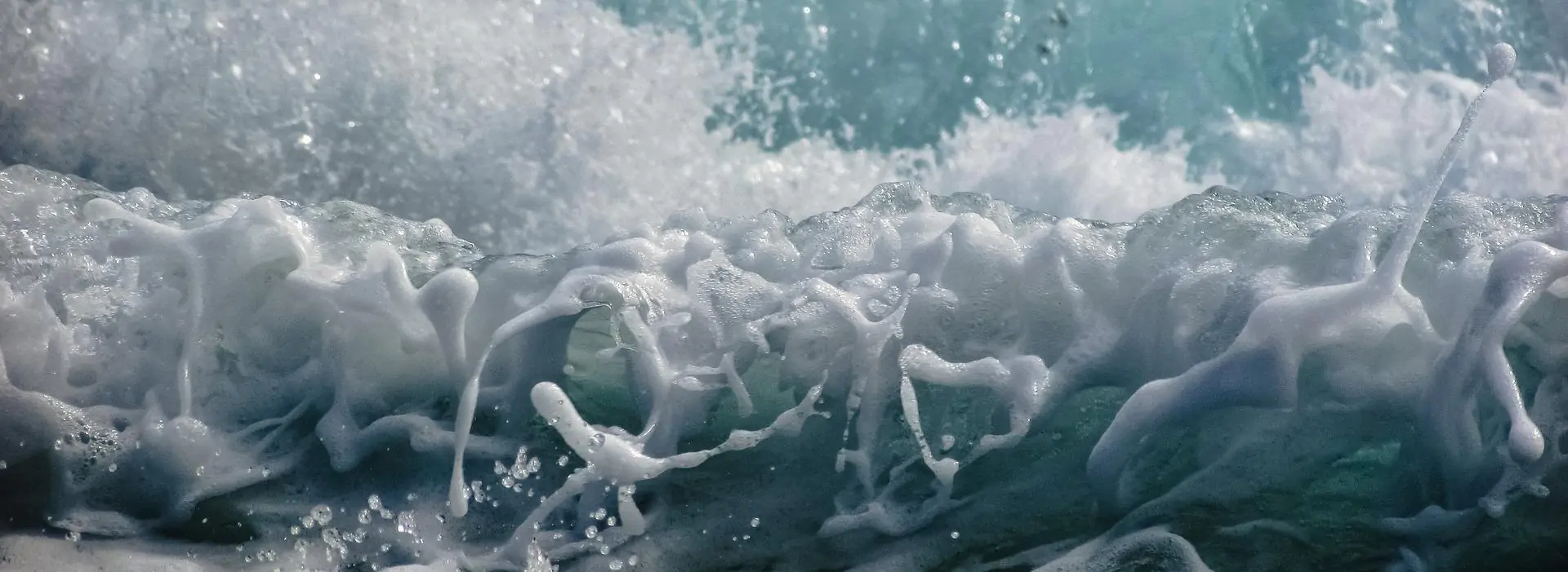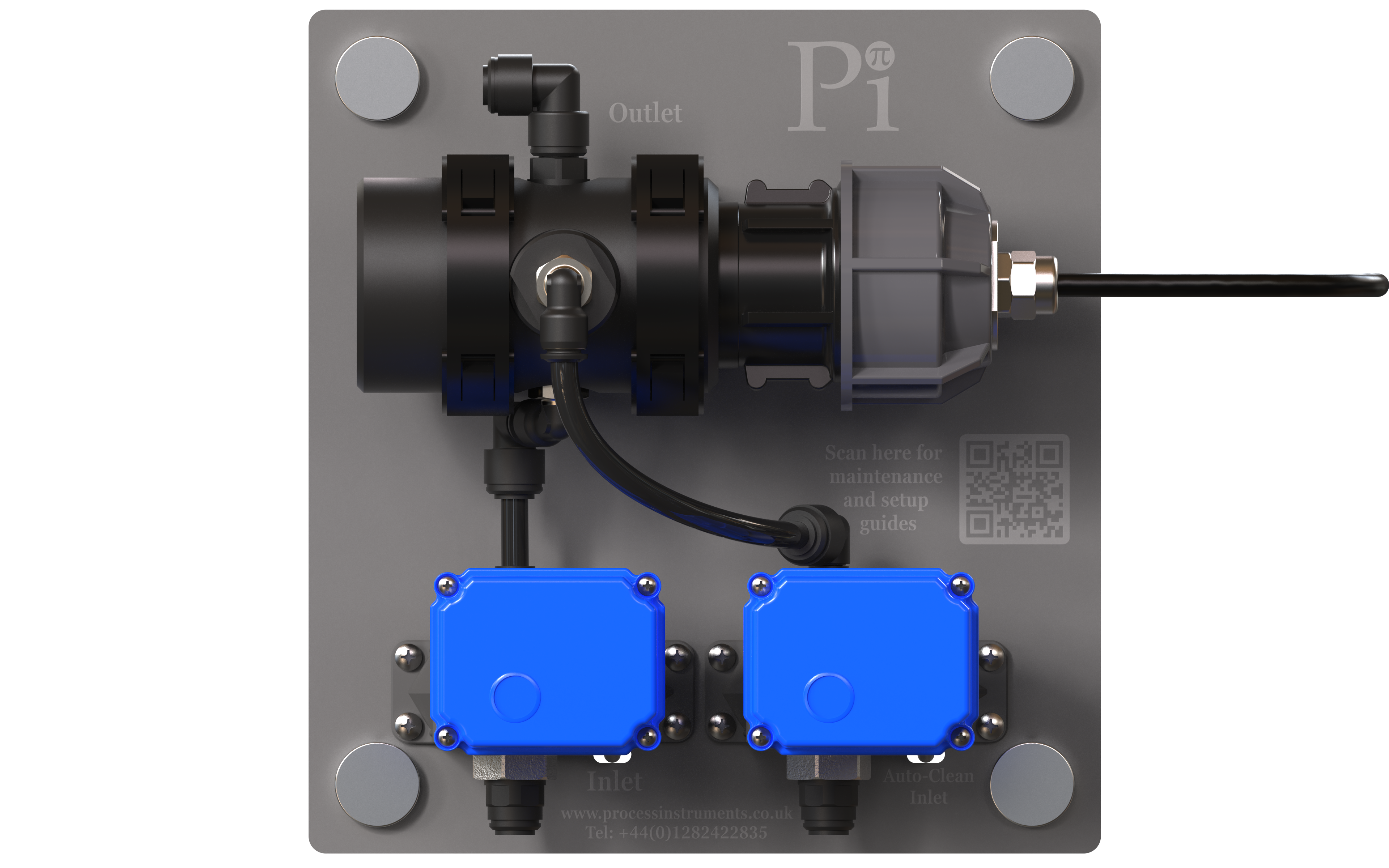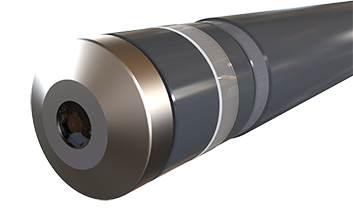A Water Treatment Works in Georgia, US, recently trialed a TurbSense® online turbidity analyzer from Pi (supplied by Pi’s US technology partner, Chemtrac Inc.).
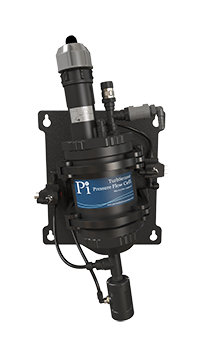
The instrument was installed on the Raw Water inlet alongside a different manufacturer’s surface scatter turbidity meter. The results of the instruments were compared against a HACH 2100N Laboratory Turbidimeter.
The Plant
The trial plant had used the competitor’s surface scatter for some time on their raw water, however they found that the accuracy of their results vs their HACH 2100N Laboratory Turbidimeter was poor, and they therefore trialed the TurbSense® as a potential alternative
AutoCleaning
TurbSense® was equipped with its AutoClean capability, which actively cleans the sensor with a water jet to remove dirt from the sensor tip on a regular basis, however this wasn’t used during the trial so the customer could see how quickly the sensor fouled.
Results
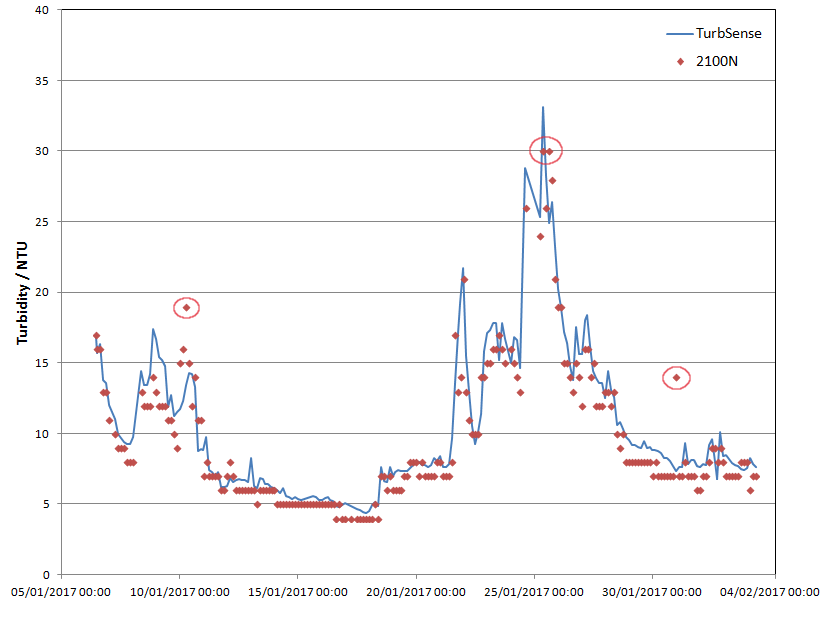
Measurements froM the 6th of January 2017 to the 31st January 2017 have been used to demonstrate the variation between the two analyzers. This data set was chosen to be representative of the whole trial.
The trial found that the CRIUS® TurbSense® from Pi (HA4 from Chemtrac in the USA) provided the most accurate and reliable turbidity meter. Graph 1 shows the correlation between the HACH Laboratory Turbidimeter and the Pi TurbSense® online turbidity meter. The graph clearly shows that online results and lab results have a high correlation. The three results circled are anomalous and are probably due to a sampling error.
Graph 2 continues the correlation between the online and laboratory results.
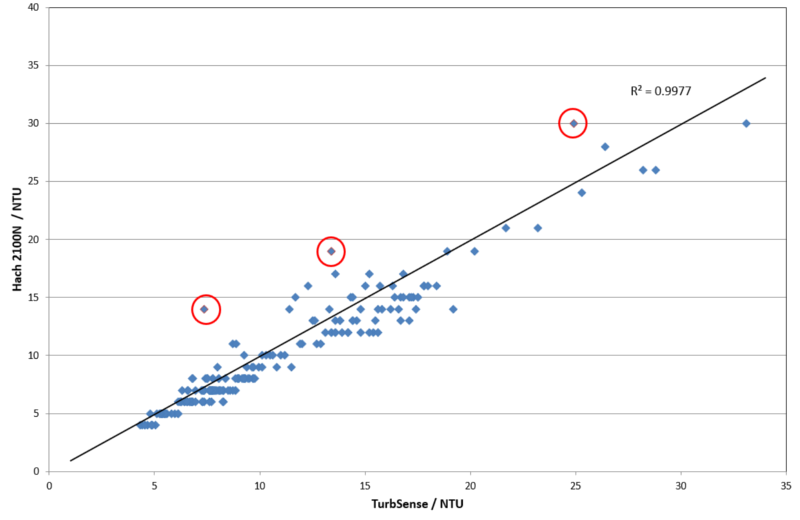
Graphs 3 and 4 both show the same data set, but this time for the online surface scatter results plotted against the laboratory results. An x-y plot of laboratory results vs the surface scatter turbidity meter results shows a very poor correlation between them.
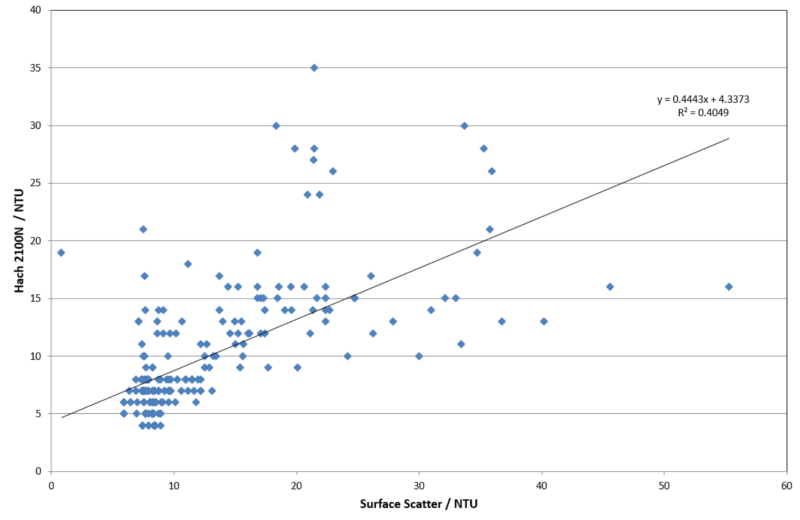
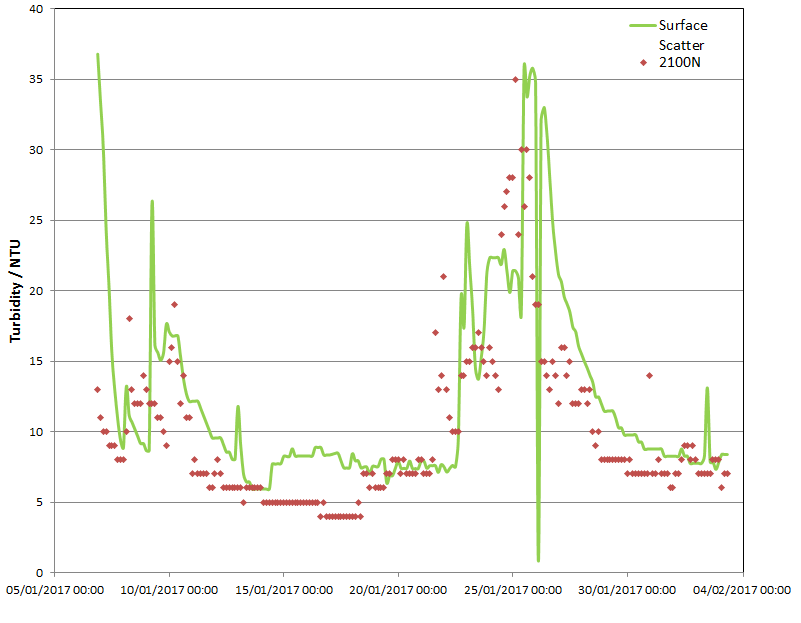
Conclusion
The data from the trial clearly shows a highly reliable correlation between the actual turbidity (as determined by the bench top lab unit) and the TurbSense® online turbidity meter from Pi. Perhaps surprisingly, and counter intuitively, the results show a much better correlation with the sample contacting TurbSense® than with a competitor’s non-contacting surface scatter turbidity meter.
Previous Post
Pi’s Managing Director meets with new Mexico distributor
Next Post
Pi re-certified to ISO 9001:2015

